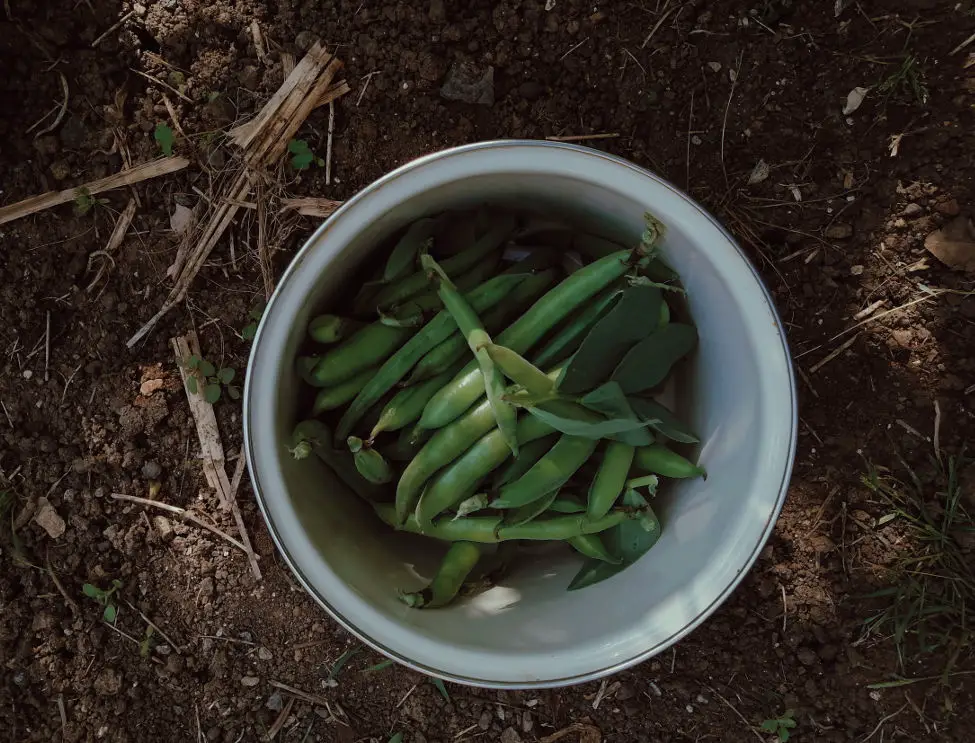Growing beans in a pot is a rewarding and straightforward project that brings the joy of homegrown produce to even the smallest spaces. In this friendly guide, we’ll explore the step-by-step process of cultivating beans in containers, from meeting their basic needs to troubleshooting common issues. Let’s dive into the world of container gardening and discover how you can enjoy a bountiful harvest of beans right from your patio or balcony.
Basic Needs: Setting the Stage for Bean Success
Growing healthy beans in a pot begins with understanding and meeting their basic needs.
Container Selection and Size
Choosing the right container is crucial for successful bean cultivation. Opt for a pot that is at least 30 cm deep with proper drainage holes to prevent waterlogging. The size of the container depends on the bean variety; bush beans generally require smaller pots than climbing varieties.
Soil and Fertilizer
Select a high-quality potting mix that provides good drainage and aeration. Beans thrive in slightly acidic to neutral soil. Consider adding organic matter or compost to enrich the soil. Fertilize with a balanced, all-purpose fertilizer when planting and then periodically throughout the growing season.
Sunlight Requirements
Beans are sun-loving plants, so choose a sunny location for your pot. Ensure they receive at least 6-8 hours of direct sunlight daily for optimal growth and productivity.
Growing Techniques: Nurturing Beans from Seed to Harvest
Planting Seeds
Start by soaking the bean seeds overnight to encourage germination. Plant the seeds about 3-5 cm deep in the pot, spacing them according to the variety’s recommendations. Water the soil thoroughly after planting.
Watering Strategies
Keep the soil consistently moist, but not waterlogged. Watering deeply and regularly is essential, especially during dry spells. Avoid overhead watering to prevent foliar diseases.
Providing Support for Climbing Varieties
If you’re growing climbing beans, provide them with a trellis, stakes, or a support structure to help them climb as they grow. This not only saves space but also improves air circulation around the plants.
Mulching for Moisture Retention
Apply a layer of organic mulch around the base of the plants to conserve moisture, suppress weeds, and regulate soil temperature. Mulching also helps in preventing soil-borne diseases.
Problem Solving: Addressing Common Bean Growing Challenges
Pests and Diseases
Beans are generally hardy, but common pests like aphids and beetles can pose a threat. Keep an eye out for any signs of infestation and use organic insecticides or insecticidal soap if needed. Fungal diseases can be minimized by ensuring proper air circulation and avoiding overhead watering.
Yellowing Leaves
Yellowing leaves may indicate nutrient deficiencies. Adjust the pH of the soil if necessary and provide a balanced fertilizer. Yellowing can also result from overwatering, so monitor soil moisture levels.
Poor Harvest or Flower Drop
Inadequate pollination can lead to poor fruit development or flower drop. Encourage pollinators by planting bee-friendly flowers nearby. Gently shake the plants to distribute pollen if needed.
Harvesting and Storage: Enjoying the Fruits of Your Labor
Determining Ripeness
Harvest your beans when they are young and tender, usually around 50-60 days after planting. Pick them before the seeds inside the pods become too large. Snap beans should be harvested before the pods swell while shelling beans are ready when the pods start to dry.
Harvesting Techniques
Use clean, sharp scissors or shears to harvest beans without damaging the plant. Harvest regularly to encourage continuous production.
Storing Fresh Beans
Store freshly harvested beans in the refrigerator for up to a week. To preserve their crispness, place them in a perforated plastic bag. Alternatively, blanch and freeze them for longer storage.
Tips: Enhancing Your Bean-Growing Experience
Succession Planting
Extend your bean harvest by practising succession planting. Start new seeds every few weeks to ensure a continuous supply of fresh beans throughout the growing season.
Companion Planting
Plant beans alongside companion plants like carrots, radishes, or marigolds to enhance growth and deter pests.
Crop Rotation
To prevent soil-borne diseases and pests, practice crop rotation by planting beans in a different location each year.
Savouring the Fruits of Container Gardening
Growing beans in a pot is not only practical but also a delightful way to experience the joys of home gardening, even with limited space. By providing the right conditions, addressing challenges promptly, and incorporating useful tips, you can cultivate a thriving bean crop right on your doorstep. Embrace the simplicity and satisfaction of growing your beans, and let your container garden flourish with greenery and flavour.
